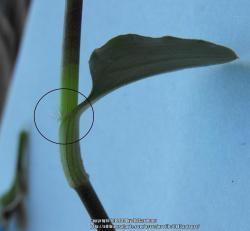TYVM for the inputs! I've always been a straight species kind of gardener, very little experience or interest in cultivar plants. So not asking about appearance of seed offspring, or store-bought plants with cultivar names, just the definitions of annual, perennial.
I've never read a formal description or plant ID key that said a plant was not either annual or perennial (and sometime biennial.) I've never seen a resource that said there was variation in or interpretation of whether or not a plant was annual vs. perennial (or biennial) just that plants can behave as one or the other depending on location/climate. If it's just being used as a matter of personal interpretation, and/or to indicate the behavior of a plant, which I think is what you are both saying, Kent and Janet, I maintain respectful disagreement about these definitions being malleable to personal interpretation, outside the context of behavior.
I don't see any confusion or room for personal subjection in the definitions printed on Wiki for annuals and perennials. The definitions are not variable or malleable regardless of behavior of individuals and/or climatological factors.
http://en.wikipedia.org/wiki/P...
http://en.wikipedia.org/wiki/A...
Biennials:
http://en.wikipedia.org/wiki/B...
There is often criticism of Wiki for printing inaccurate info, so info there is best confirmed through other sources.
Dictionary.com:
http://dictionary.reference.co...
Oxford dictionary:
http://www.oxforddictionaries....
National garden assoc.:
http://assoc.garden.org/course...
Lady Bird Johnson wildflower center:
http://www.wildflower.org/glos...
TX A&M confirms, and addresses the issue of regional/climate behavior, which is a footnote to the issue of annual/perennial/biennial, not part of the definiton:
http://aggie-horticulture.tamu...
Using an example given above, Carduus nutans:
"Musk thistle is usually a biennial, requiring 2 years to complete a reproductive cycle, but may germinate and flower in a single year in warmer climates."
http://www.nps.gov/plants/alie...
PFAF:
http://www.pfaf.org/user/Plant...
TX A&M:
http://www.texasinvasives.org/...
Bringing this back to this discussion, Commelina benghalensis:
Great pics:
http://www.gpnc.org/images/pdf...
Defined as perennial:
http://www.gainvasives.org/pub...
http://en.wikipedia.org/wiki/C...
USDA uses 'duration'
http://plants.usda.gov/core/pr...
"can be" is used here:
http://www.issg.org/database/s...
This site indicates the climatological difference:
http://idao.cirad.fr/content/o...
"Tropical spiderwort is considered a monsoon weed in its native habitat, which is characterized by
rapid germination and completion of the lifecycle during the limited monsoon season while soil moisture is plentiful (Kaul et al., 2002)."
-
http://journal.cotton.org/jour...
In the case of this particular plant, an unusual reverse may have been revealed when it was moved to a more hospitable climate. It sounds like this plant has a difficult time surviving perennially in its' native environment because of a dry season. When brought to the moist southeast US, it thrives perennially. If that is accurate, it is understandable why this plant is so successful at being invasive.
From the above example about this Commelina, a classic example of thousands I've seen over the years, it seems that this vagueness ("can be annual or perennial") is also sometimes used when it's not clear whether or not a plant is perennial, so the author speaks about its' behavior. That's really the important thing as far as USING definitions, what a plant can be expected to do in a particular location, hardiness, and that one can never 'save' annuals indefinitely. I'm more firmly convicted in my original thoughts after asking about this, and doing a couple hours of research about it this morning.
Growing a perennial plant in a location where it can't survive permanently doesn't change the fact that it's a perennial. A patch of biennial foxgloves blooms perennially due to the various ages of the individuals. An annual sunflower will never live for years anywhere.
Thanks again for sharing your thoughts and taking the time to do it.


